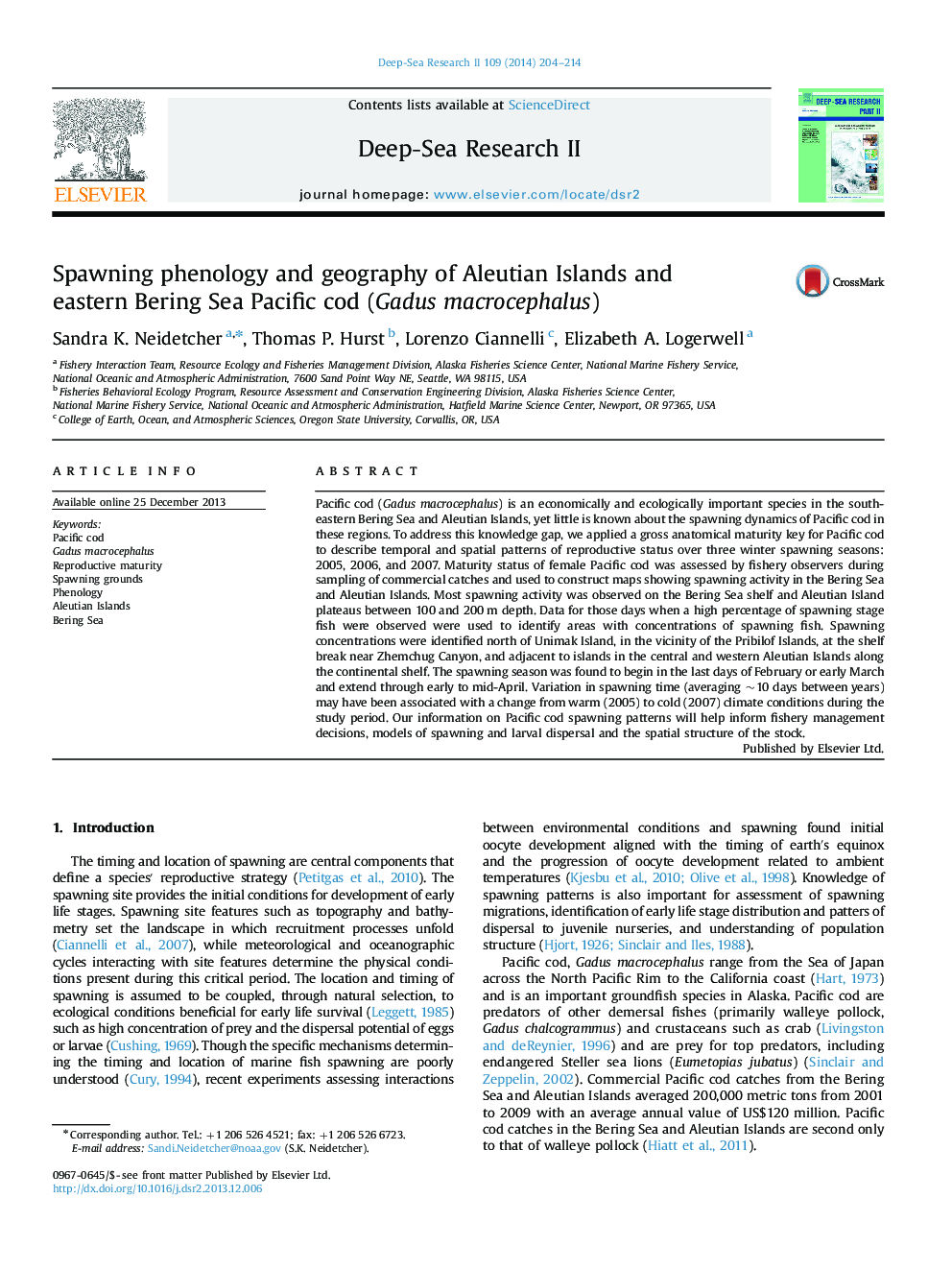| Article ID | Journal | Published Year | Pages | File Type |
|---|---|---|---|---|
| 6384182 | Deep Sea Research Part II: Topical Studies in Oceanography | 2014 | 11 Pages |
Pacific cod (Gadus macrocephalus) is an economically and ecologically important species in the southeastern Bering Sea and Aleutian Islands, yet little is known about the spawning dynamics of Pacific cod in these regions. To address this knowledge gap, we applied a gross anatomical maturity key for Pacific cod to describe temporal and spatial patterns of reproductive status over three winter spawning seasons: 2005, 2006, and 2007. Maturity status of female Pacific cod was assessed by fishery observers during sampling of commercial catches and used to construct maps showing spawning activity in the Bering Sea and Aleutian Islands. Most spawning activity was observed on the Bering Sea shelf and Aleutian Island plateaus between 100 and 200Â m depth. Data for those days when a high percentage of spawning stage fish were observed were used to identify areas with concentrations of spawning fish. Spawning concentrations were identified north of Unimak Island, in the vicinity of the Pribilof Islands, at the shelf break near Zhemchug Canyon, and adjacent to islands in the central and western Aleutian Islands along the continental shelf. The spawning season was found to begin in the last days of February or early March and extend through early to mid-April. Variation in spawning time (averaging ~10 days between years) may have been associated with a change from warm (2005) to cold (2007) climate conditions during the study period. Our information on Pacific cod spawning patterns will help inform fishery management decisions, models of spawning and larval dispersal and the spatial structure of the stock.
